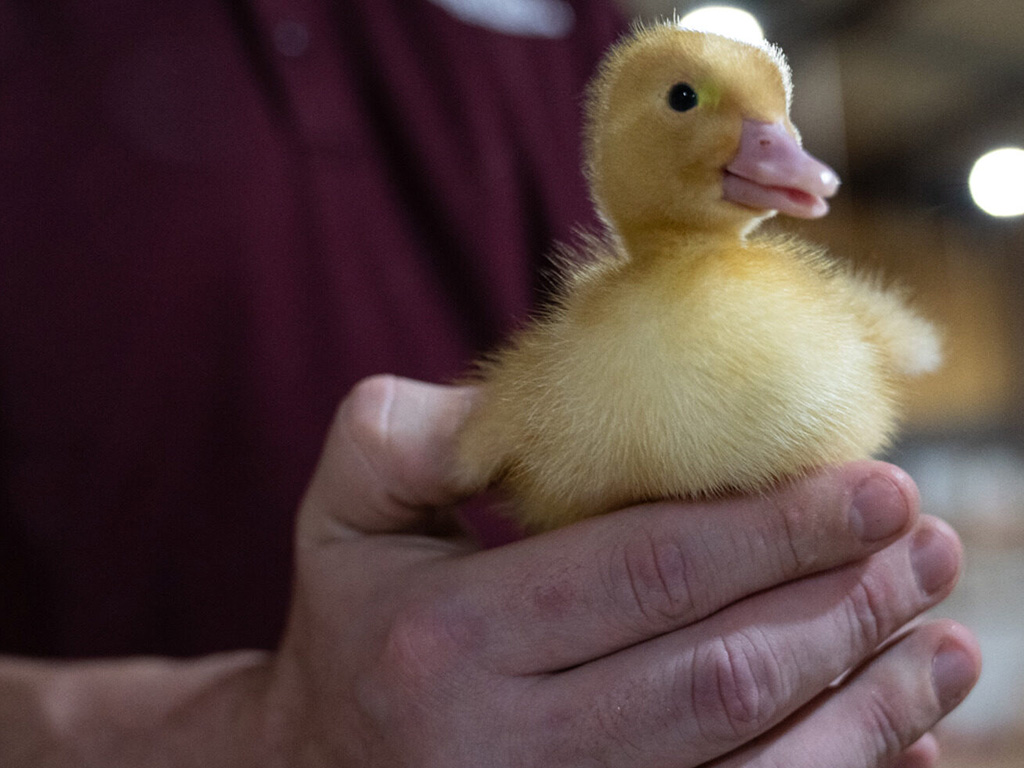What works for raising chickens also works for raising ducks, right? Not so, says Texas A&M poultry scientist

When we think of ducks in Texas, most people probably think about the ducks in the pond at their local park, or the migratory birds that have waterfowl enthusiasts up at the crack of dawn, to stand for hours in frigid bodies of water to hunt.
But those are not the ducks Dr. Greg Archer, associate professor and Texas A&M AgriLife Extension Service poultry specialist in the Texas A&M College of Agriculture and Life Sciences Department of Poultry Science, thinks about.
When Archer thinks of ducks, he thinks of commercial ducks, raised for meat and eggs. He also thinks of the scarcity of information available to producers and scientists, due to the lack of duck research being conducted.
A common misconception is that chickens and ducks are the same. What works for one should work for the other. But that is not always the case.
Archer has done many poultry lighting studies through the years and is one of the only researchers in the country conducting such research. He continues lighting projects because the industry is trying to grow and modernize their production practices to be more efficient while also keeping the welfare of the ducks at the forefront.
Like chickens, commercial ducks are raised indoors. Many farmers who contract with the commercial producers are Amish, so their ducks are raised in natural light conditions or under kerosene light. Archer says there is not much literature on how artificial lighting technologies could affect ducks. Thus, Archer’s first project on them at Texas A&M focused on lighting and what hue ducks perform best under.
“Over time, we have found that broiler chickens tend to grow better under blue light because it makes them rest, which in turn enhances their growth performance,” said Archer. “We thought that should be the same for ducks. And when we did that, we actually found out the spectrum of light blue light has a negative effect on them. Their stress hormones went up and they tended to get sick more often.”
Researchers found ducks perform better under a redder light, similar to layer chickens. He credits this to their evolution over time as ducks are naturally in more open, exposed areas near bodies of water.

